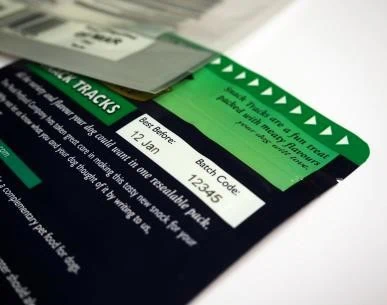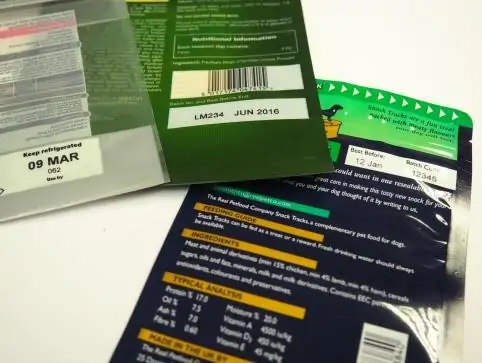Chris Baker, director of Rotech – designer and manufacturer of offline advanced carton feeding systems – reflects on packaging trends facing the industry, in particular the rise of the stand-up and how RF1 technology can aid traceability.
In recent years packaging trends have involved issues such as size, ease of opening, increased use of sustainable material and the ability to market products on pack. 
With demographic trends shifting towards more people living in big cities, packaging for urban-dwellers has had to address the 1-2 person size households and the increase in food-to-go eating habits. Shelf appeal is also a hugely important issue – and fully printable packages with the potential to incorporate attractive graphics and bold colours have an advantage.
Stand-up pouches, along with flexible, tamper-evident sleeve labels and anti-counterfeit packaging are three formats with growth potential. The stand-up pouch has emerged as one of the most versatile and rapidly growing flexible packaging formats for an increasingly wide variety of end-use applications. Some analysts note that stand up pouches can be up to 95% lighter than rigid containers and reduce carbon footprints by 10%. These benefits help to trim transportation costs due to lighter shipments along with packaging material costs, and boost the number of products that can be stocked on limited shelf space.
Almost 90 billion stand-up pouches were used in 2014 globally, with Asian countries accounting for 54% of that figure. Market research firm MarketsandMarkets has found that the stand-up pouches packaging market is projected to reach $33.4bn by 2020, at a CAGR of 8.1% from 2015 to 2020.
Consumer testing has clearly shown the ease of use and functionality of stand-up pouches compared to carton boxes, plastic containers, glass bottles, or metal cans. Cereal packs in carton board often rip while opening; snacks in plastic jars can often be hard to open with a seal under the lid awkward to remove; the lids on glass jars frequently prove difficult to unscrew; cheese packaged in traditional flexible film can be frustrating to unfurl.
Demand for pouches is being driven by a range of factors including machinery improvements in terms of speed and the ability to incorporate re-sealable features such as zippers and sliders. With the expected growth of stand-up pouches, Rotech is an ideal partner for companies requiring advanced feeding systems and coding.
Some packs are inherently awkward to code online – perhaps because the area to be coded is in a hard-to-reach corner of the pack or because handling issues make it difficult for the pack to be presented squarely and consistently to the coding device.
Offline coding using Rotech’s RF Pouch can solve this. The RF Pouch is a standalone vacuum feed overprinting system enabling coding pouches off-line before they are filled, and can be brought to the production line ready printed. This has considerable advantages for code quality as coding the pouch in its flat form results in a consistently clear, perfectly positioned code. Furthermore, where an online coder is struggling and creating a bottleneck, removing the process from the critical path can deliver efficiency improvements.
The RF Pouch can be fitted with a range of printing technologies though a thermal transfer printer is generally used in this particular application due to its ability to print wide formats with a print width of up to 128mm.It prints continuously, and is suited to the automatic feeding of polybags, crash lock cartons, re-sealable pouches and asymmetric products.
Using vacuum (pick and place) technology the system can transport a wide range of difficult to feed products from stack to stack. Once ‘picked’ the products are consistently placed on an integral conveyor where they can be printed, labelled and inspected prior to being stacked again.
As most offline feeders use friction feeding, designed to feed packs or pouches of a uniform thickness, the material to be coded is passed between a roller and a rubber friction insert. The gap between the two components is set according to the thickness of the material. Widening the gap to accommodate a resealing mechanism may result in inaccurate feeding.
The RF Pouch assuages this issue by using vacuum pick and place technology to pick a pouch from a stack, place it onto a conveyor for printing, and place the printed pouch neatly onto another stack for collection, at speeds of around 40 pouches per minute. The RF1 overprinting system can provide high speed, clear and well-positioned coding with the packs brought to the production line ready printed.
Companies worldwide are already using the RF Pouch to print pouches that are to be filled with anything from beef jerky snacks to dried fruit and nut mixes. The benefits of using stand-up pouches are clear and the rising use of this packaging format is expected to continue.

